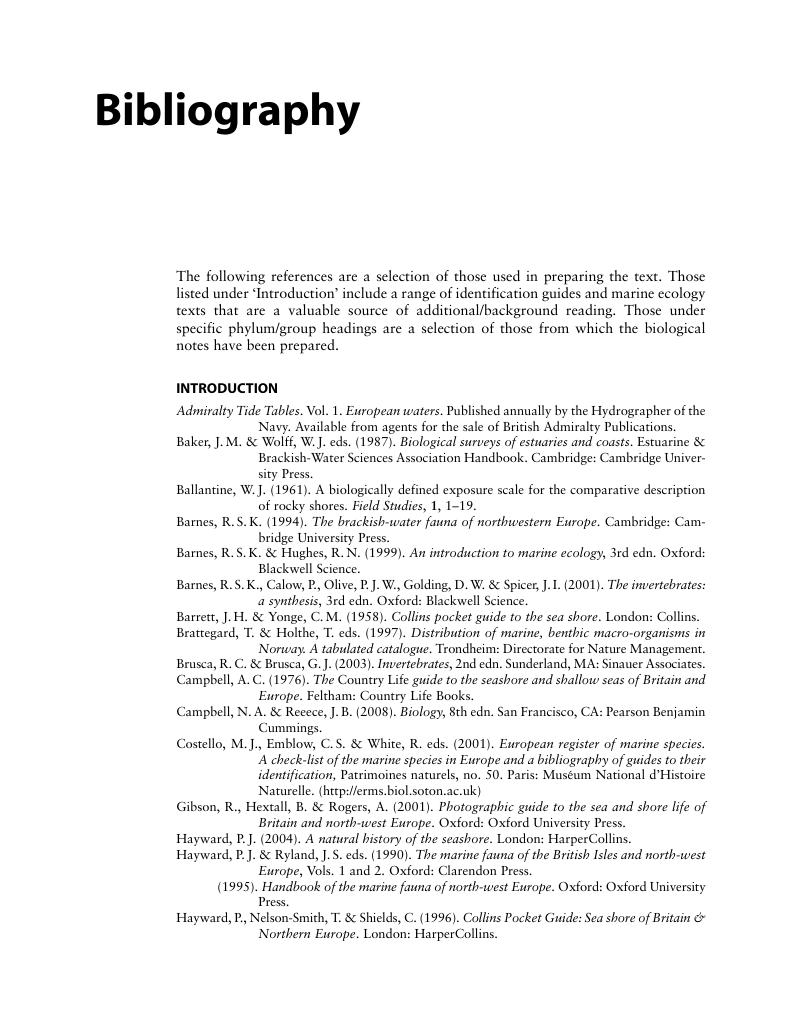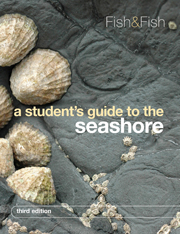Book contents
- Frontmatter
- Contents
- Preface
- Acknowledgements for illustrations
- Introduction
- Design and layout of the book
- Illustrated guide to the plants and animals of the shore
- Seaweeds
- Lichens
- Anthophyta
- Porifera
- Cnidaria
- Ctenophora
- Platyhelminthes
- Nemertea
- Priapula
- Annelida
- Mollusca
- Arthropoda
- Sipuncula
- Echiura
- Bryozoa
- Phoronida
- Echinodermata
- Hemichordata
- Chordata
- Bibliography
- Glossary
- Index
- Plate section
- References
Bibliography
Published online by Cambridge University Press: 05 June 2012
- Frontmatter
- Contents
- Preface
- Acknowledgements for illustrations
- Introduction
- Design and layout of the book
- Illustrated guide to the plants and animals of the shore
- Seaweeds
- Lichens
- Anthophyta
- Porifera
- Cnidaria
- Ctenophora
- Platyhelminthes
- Nemertea
- Priapula
- Annelida
- Mollusca
- Arthropoda
- Sipuncula
- Echiura
- Bryozoa
- Phoronida
- Echinodermata
- Hemichordata
- Chordata
- Bibliography
- Glossary
- Index
- Plate section
- References
Summary

Information
- Type
- Chapter
- Information
- A Student's Guide to the Seashore , pp. 475 - 505Publisher: Cambridge University PressPrint publication year: 2011
